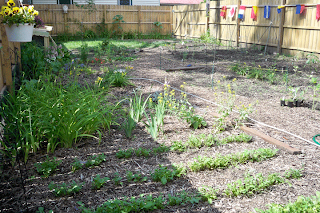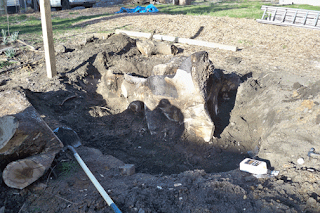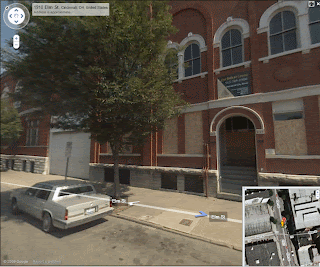
...For I have sinned.
Last week, I was shopping for dinner late, and (forgive me) I saw a pretty ribeye on sale at (I'm so sorry...) Kroger's. I was tired and not thinking straight, so I bought two.
I guess you have to wander every once in a while to realize just how good you have it. You see, my butcher is
Bessler's Market. I have bought my best steaks there, over and over. The beef is raised locally and they age it. They also source their poultry from just down the road, as well. But I digress. I'm talking about beef and how I screwed up.
So, anyway, I bought a steak from Kroger's. What a mistake. It looked fine, but the texture was off and the flavor was bland. Fortunately, I had a good rub with it. For the same price, I could have had a steak to remember from Bessler's. Give them a try. Tell them Mr. Inch-and-Three-Quarter-Porter sent you.
As part of my penance, I'm going to give you my recipe for cowboy steaks and watercress salad. I ripped this off from Bobby Flay, and changed it modestly. Here's what you need:
(serves 2)
1 1.75" Porterhouse steak
1 tsp garlic powder
1 tsp dry mustard
1tsp finely ground espresso or Italian roast
2 tsp salt
2 tsp thyme
2 tsp chipotle powder (hot paprika, ground smoked anchos, or even chili powder will work)
1 tsp ground pepper
1 tsp olive oil to finish
Mix the ingredients for the rub (except oil) together and taste for heat. This should be on the high side of spicy. It will mellow on the grill. Rub into the meat, both sides. I like to add the olive oil to both sides to activate the spices a bit more. You can do this up to one day in advance, but at least 1 hour before cooking. If it will be more than one hour or so, cover and refigerate. If you can't get a porterhouse, a good thinck ribeye works too. Bone in is great, too, but you'll want it 1 3/8" not 1 3/4".
One hour before cooking, pull the meat from the fridge and allow to come up to room temperature. If it's on a cold plate, switch to one that's room temperature. After 40 minutes, start a fire in the grill. I prefer the lump hardwood style charcole. I also prefer using a charcole chimney--it makes for cleaner tasting food and lights fast. When the coals have mostly developed white edges, dump onto one side of the grill and place to cooking grill back over the coals to heat. Make sure both sides of the grill should be clean and hot
Grill steak for roughly 6 minutes per side. The fire should be hot so keep an eye on the steak. A little flame is good. Inferno, not so much. If it flares too much, move it off the fire to the other side of the grill for a moment. After you've given the steak 12 minutes, if you think it was pretty cold when it went on the grill, stand it up on the bone end, over the fire for 2 minutes. Then move the steak to the over side of the grill, bone facing the fire side. Feel for doneness. It should be very rare at this point. Let the steak sit for another 4-6 minutes on the cooler side of the grill turning after 2 minutes. Test for doneness after 4 minutes. You may want to give it another minute per side to crisp up the crust but that's up to you. Let the steak rest for 5-9 minutes on a warm plate.
I like to serve this with a watercress salad with tomatoes, blue cheese and a dijon-shallot-sherry vinegarette. I also like to grill some new potatoes that I blanched, then seasoned with salt, pepper and olive oil.
This is a keeper. Trust me.
And if you're anywhere near Covington, try Bessler's Market. If you want my custom cut from the butcher, make sure you get there before 4:30.
If you came here via Julia's
Blog Party, welcome! If you've not visited Hooked on Houses,
give it a gander.





































